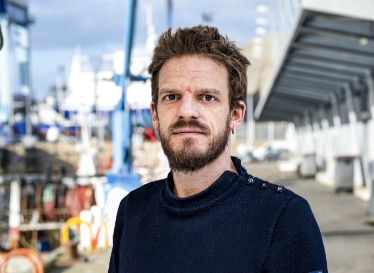The greatest challenge for our company is to convince shippers that shipping is a new lever for added value.
Rémi STAUB
As a propulsion engineer, Rémi heads up Research & Development on the different types of low-carbon mechanical propulsion, such as hydrogen, biofuels, synthetic fuels, etc.
“The energy transition for shipping also requires changes to the mechanical propulsion model.
The current period is complex; regulations are changing rapidly and today nobody can affirm with any certainty what part hydrogen, ammonia, methanol and related synthetic fuels will play in the propulsion of ships in the future. Shipowners must make risky strategic choices and it is crucial to monitor the maturity levels of technologies, prices, and the availability of alternative fuels, while conducting life cycle analyses to measure their real environmental value.”


Simon DELVOYE
As an engineer in hydraulics and aerodynamics, Simon works with architects and design offices on all technologies related to sail performance, weather routing and naval architecture.
“Using sails on ships is something that humans have done for thousands of years.
However, our recent abilities to model hulls, to anticipate the performance of a profile, or the progress made in terms of materials, mean that the scope of possibilities with wind power can be totally redefined.
We are at the starting point of a period of intense innovation in the field of wind propulsion for commercial ships.”